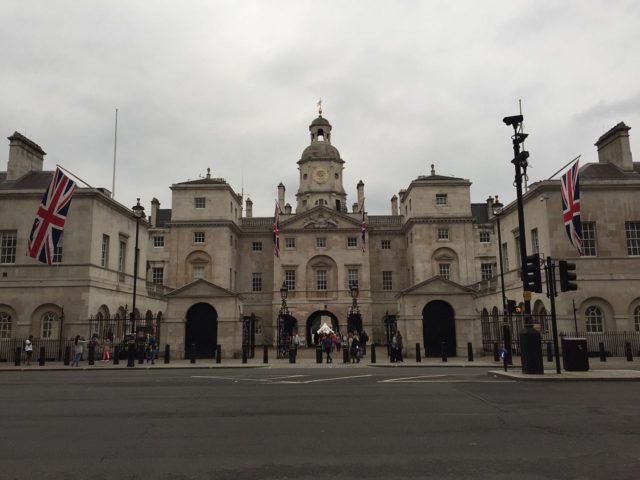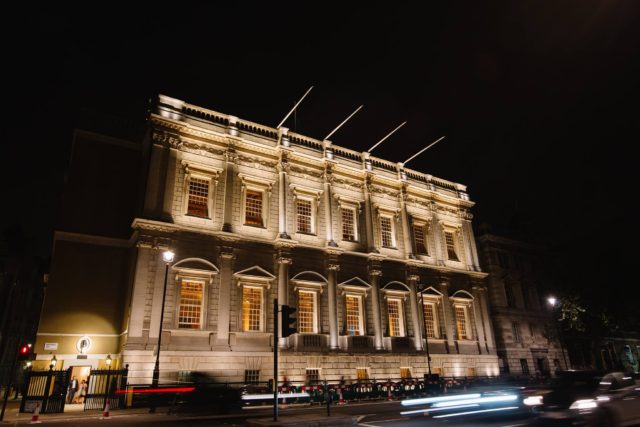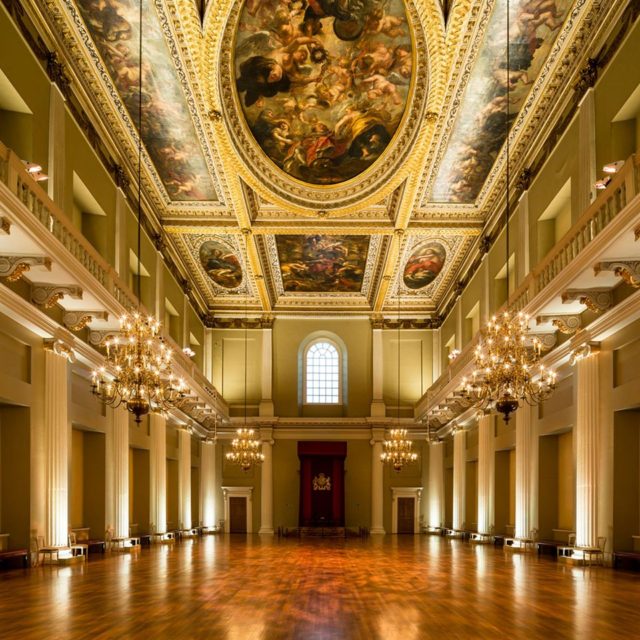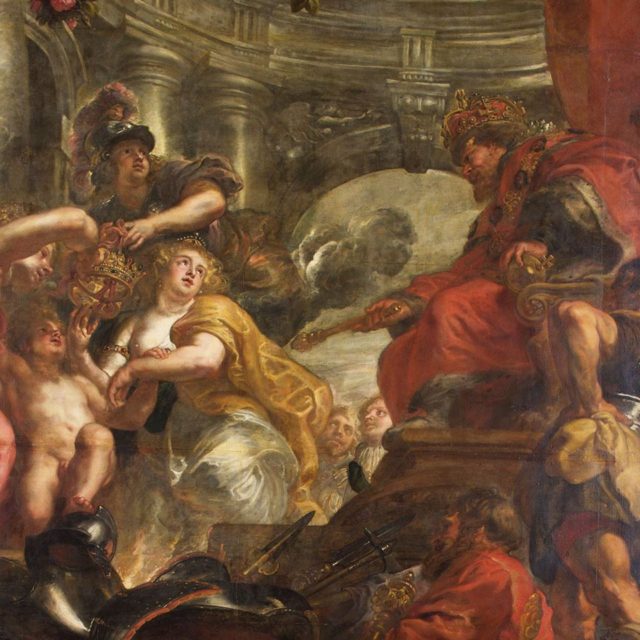Banqueting House
Before reaching the historic royal palace of the Banqueting House, we pass through the central archway of the Horse Guards building we come out to its front facade & the adjacent Whitehall St. which is named after the famous palace that stood there from 1530 to 1698.
The massive palace of over 1500 rooms surpassed in size of the Vatican & the Versailles but was unfortunately destroyed by fire to a great extent. The only bit of it that survived is known today as the Banqueting House and is facing the Horse Guards building from the other side of the road.
The Banqueting House was the first building in England designed in a Palladian style in 1622 by Inigo Jones, the first significant architect of the early modern period. Having traveled to Italy and seen the buildings of the ancient world, Inigo Jones decided to recreate something of their effect in rainy London.


The building was intended to look like a piece of ancient Rome transposed to Whitehall and the effect was indeed extraordinary. It was also intended for masques, receptions, and entertainments. However as soon as the painted ceiling by Peter Paul Rubens was installed in the main hall inside, it fell out of use due to the concern about the damaging effect of candle smoke on the paintings during evening occasions.
This was a revolutionary building in terms of style but it was also the site of revolutionary events such as the Execution of King Charles I in 1649. The ceiling of the Banqueting House is a masterpiece and the only surviving in-situ ceiling painting by Sir Peter Paul Rubens. It is also one of the most famous from the golden age of painting. The magnificent Great Hall & the royal portrait of King Charles I by Daniel Mytens (1590-1647) complete the artful puzzle. More



